
Introduction to Hair Growth
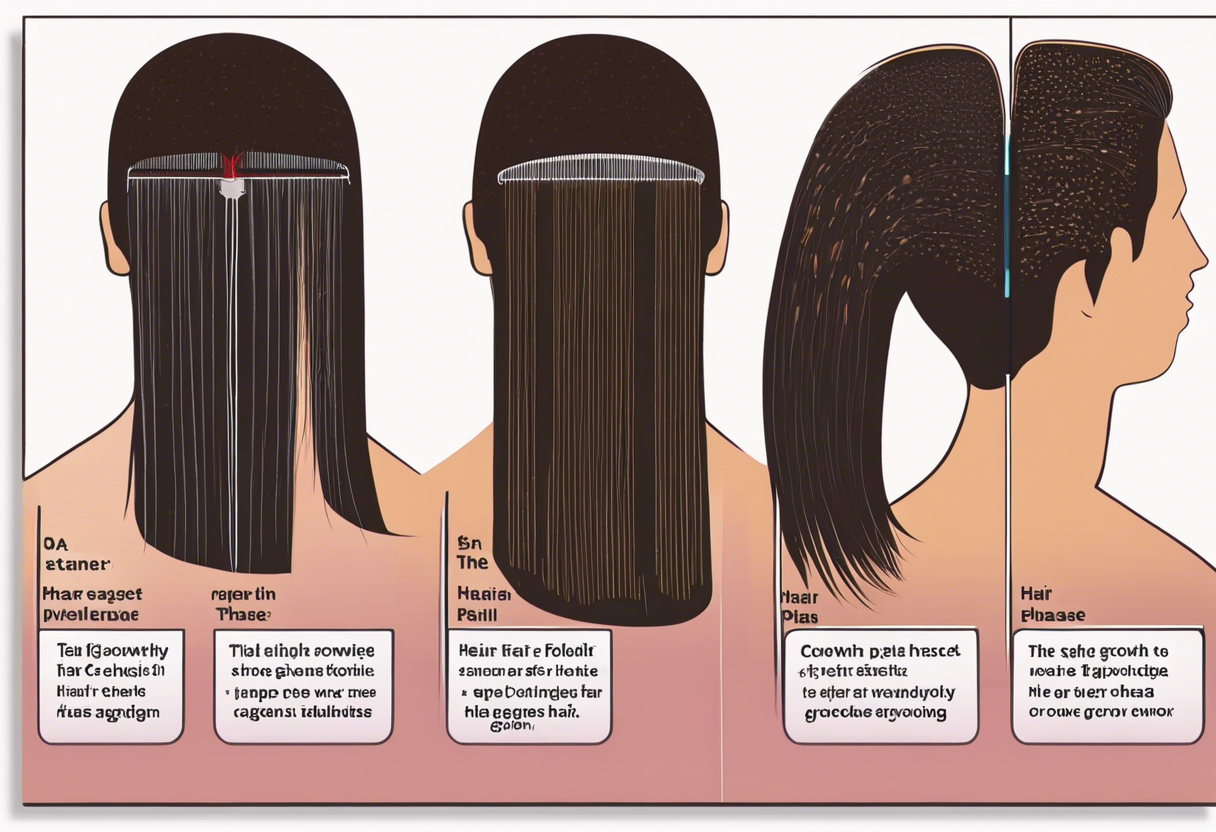
Hair growth is a natural process that occurs in cycles. Understanding the basics of hair growth can help you implement effective haircare practices to promote faster and healthier hair growth. Hair growth is influenced by various factors, including genetics, lifestyle, and overall health.
The Hair Growth Cycle
The hair growth cycle consists of three main phases: anagen, catagen, and telogen. During the anagen phase, the hair follicles are actively producing new hair cells, which leads to hair growth. This phase can last from two to seven years and determines the length of your hair.
After the anagen phase comes the catagen phase, which is a transitional phase lasting for about two weeks. During this time, the hair follicle regresses and separates from the blood supply, preparing for the next phase.
The final stage is the telogen phase, also known as the resting phase. In this phase, the hair follicle is at rest and no longer producing new hair cells. The old hair eventually falls out, making way for new hair growth. The telogen phase usually lasts for about two to three months before the cycle repeats.
Factors Affecting Hair Growth
Several factors can affect hair growth, including:
Genetics: The rate and pattern of hair growth are partly determined by genetics. Some individuals naturally have faster hair growth rates compared to others.
Diet and Nutrition: A balanced diet rich in vitamins, minerals, and proteins is essential for hair health and growth. Consuming foods like lean meats, fruits, vegetables, and whole grains can provide the necessary nutrients for optimal hair growth.
Haircare Practices: Using harsh chemicals, excessive heat styling, or tight hairstyles can damage the hair and impede its growth. Gentle handling, proper moisturization, and avoiding excessive hair manipulation can promote healthier hair growth.
Medical Conditions: Certain medical conditions, such as thyroid disorders, hormonal imbalances, and scalp conditions like alopecia, can affect hair growth. It is important to seek medical advice if you notice any significant changes in your hair growth pattern.
Promoting Faster Hair Growth
To promote faster hair growth, it is essential to maintain a healthy lifestyle and adopt proper haircare practices. Here are some tips:
Eat a Balanced Diet: Ensure your diet includes a variety of nutrients such as vitamins A, C, E, B vitamins, iron, zinc, and protein to support hair growth.
Avoid Heat Styling: Excessive use of heat tools like flat irons and curling irons can weaken the hair and lead to breakage. Minimize heat styling or use heat protectants to protect your hair from damage.
Keep the Scalp Clean and Nourished: Regularly wash your hair to remove dirt and excess oil from the scalp. Use a gentle shampoo and conditioner to keep the scalp healthy and nourished.
Avoid Tight Hairstyles: Avoid hairstyles that pull tightly on the hair, such as tight ponytails or braids. These styles can put unnecessary stress on the hair follicles and lead to breakage.
Protect Hair from Damage: Use protective hairstyles or accessories like satin or silk pillowcases, silk scarves, or hair bonnets to minimize friction and protect your hair from damage while sleeping.
Remember, patience is key when it comes to hair growth. It takes time for new hair to grow and replace the old ones. By adopting proper haircare practices and maintaining a healthy lifestyle, you can support faster hair growth and achieve healthier, stronger hair. Understanding the Science Behind Hair Growth
Hair growth is a complex process that is influenced by various factors, including genetics, hormones, diet, and overall health. Having a clear understanding of the science behind hair growth can help you make informed decisions about your haircare routine and promote faster hair growth.
- Hair Growth Cycle:
The hair growth cycle consists of three phases: anagen, catagen, and telogen. During the anagen phase, which can last from two to six years, the hair actively grows. The catagen phase is a transitional phase that lasts for about two weeks, during which the hair follicle shrinks. Finally, the telogen phase is the resting phase when the hair follicle is dormant for about two to three months before a new hair starts growing.
- Role of Hair Follicles:
Hair growth originates from hair follicles, which are tiny structures located in the skin. Each hair follicle contains a hair bulb at its base, where hair cells divide and grow. These hair cells are nourished by blood vessels and receive nutrients necessary for hair growth.
- Hormonal Influence:
Hormones play a significant role in hair growth. Androgen hormones, such as testosterone, can affect the growth cycle of hair follicles. An imbalance in these hormones can lead to conditions like female pattern hair loss or excessive shedding.
- Nutritional Factors:
Proper nutrition is crucial for healthy hair growth. Essential nutrients like vitamins A, C, D, E, B-complex vitamins, iron, zinc, and protein contribute to hair health. A deficiency in these nutrients can lead to hair loss or slow down the hair growth process.
- Haircare Practices:
Taking care of your hair is essential for promoting faster hair growth. Avoiding excessive heat styling, chemical treatments, and tight hairstyles can help prevent damage to the hair follicles. Additionally, maintaining a regular haircare routine, including gentle shampooing, conditioning, and moisturizing, can support a healthy scalp environment for optimal hair growth.
- Scalp Health:
A healthy scalp is vital for hair growth. Regular scalp massages can increase blood flow, stimulate hair follicles, and promote hair growth. Additionally, using scalp treatments containing ingredients like peppermint oil, tea tree oil, or rosemary oil can help maintain a clean and balanced scalp environment.
- Patience and Consistency:
It's important to remember that hair growth takes time and patience. Consistently following a haircare routine, paying attention to nutrition, and maintaining overall health are key to achieving faster hair growth. It's important to be realistic in your expectations and avoid quick-fix solutions that may not have long-term benefits.
By understanding the science behind hair growth and implementing the best haircare practices, you can optimize the conditions for faster hair growth. Consistency, patience, and a holistic approach to haircare are key to achieving healthy and luscious locks.
Tip 1: Balanced Diet and Nutrition for Healthy Hair
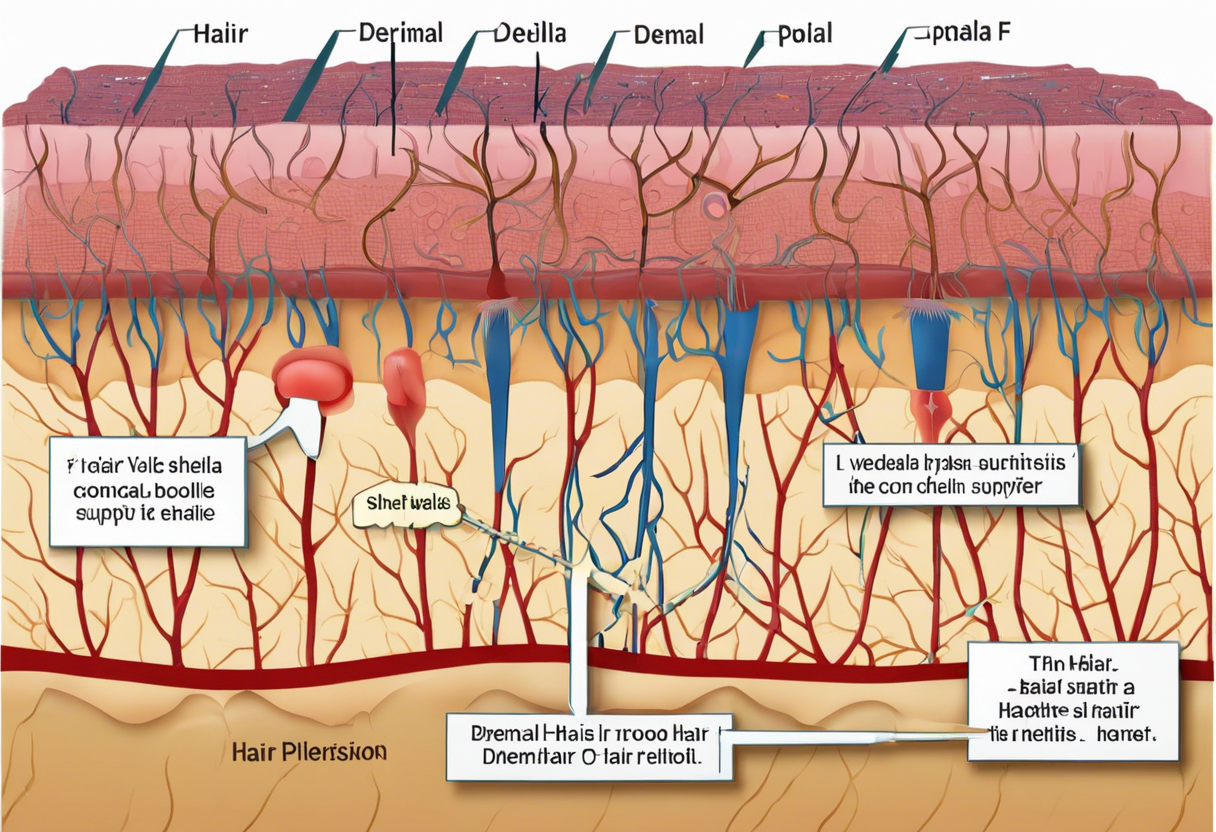
One of the essential factors for maintaining healthy hair and promoting faster growth is to follow a balanced diet and ensure proper nutrition. The nutrients that we consume play a crucial role in the health and vitality of our hair.
A diet rich in vitamins, minerals, and proteins is vital for supporting hair growth. Here are some key nutrients that you should include in your diet to nourish your hair:
Protein: Hair is primarily made up of a protein called keratin, so it is important to include an adequate amount of protein in your diet. Good sources of protein include lean meats, fish, eggs, dairy products, legumes, and nuts.
Iron: Iron deficiency can lead to hair loss and dull, brittle hair. Incorporate iron-rich foods such as lean meats, organ meats, seafood, spinach, and lentils into your diet.
Vitamin C: This vitamin is essential for collagen production, which is important for hair strength and structure. Citrus fruits, strawberries, kiwi, peppers, and dark leafy greens are excellent sources of vitamin C.
Omega-3 Fatty Acids: These healthy fats help keep the scalp nourished and moisturized, promoting healthy hair growth. Include oily fish, flaxseeds, chia seeds, walnuts, and avocados in your diet to get these essential fatty acids.
Biotin: Biotin is a B-vitamin that plays a crucial role in hair health. Foods rich in biotin include eggs, nuts, seeds, salmon, and sweet potatoes.
Apart from including these nutrients in your diet, staying hydrated is also crucial for healthy hair growth. Drinking enough water throughout the day ensures that your hair follicles receive adequate nourishment.
It is important to note that a balanced diet and proper nutrition will not show immediate results. Consistency is key, and it may take a few months to notice the improvements in your hair's health and growth. Nonetheless, with a well-rounded diet, you will be providing your hair with the necessary nutrients it needs to thrive.
Tip 2: Regular Scalp Massage for Stimulating Hair Follicles

One of the most underrated but effective practices for promoting hair growth in women is regular scalp massage. The act of massaging the scalp not only feels relaxing but also stimulates the hair follicles, encouraging healthy growth.
Here are some important points to consider when incorporating scalp massage into your hair care routine:
Increase blood flow: Scalp massage helps to increase blood circulation in the scalp, which in turn nourishes the hair follicles. Improved blood flow delivers essential nutrients and oxygen to the follicles, promoting hair growth and overall scalp health.
Stimulate hair follicles: Massaging the scalp stimulates the hair follicles by increasing the activity of the hair's roots. This can help to wake up dormant hair follicles and encourage the growth of new hair strands.
Relaxation and stress reduction: Apart from its direct effects on hair growth, regular scalp massage provides a calming and stress-relieving experience. Stress can contribute to hair loss and hinder the growth of new hair. By incorporating scalp massage into your routine, you can promote relaxation and reduce stress levels, ultimately benefiting your hair health.
When performing a scalp massage, keep the following tips in mind:
Begin by using your fingertips to gently massage the scalp in small circular motions. Apply light to moderate pressure and avoid using your nails, as this can cause scalp irritation.
Focus on covering the entire scalp, moving from the front to the back and from the sides to the crown. Be sure to massage the areas where you may experience thinning or hair loss.
Consider using hair-friendly oils or serums during your massage. Some popular options include coconut oil, argan oil, or castor oil, which have been known to promote hair growth and improve overall hair health. Apply a few drops of the chosen oil onto your fingertips and massage it into the scalp.
Aim to massage your scalp for at least five minutes, three to four times a week. Consistency is key to seeing results in terms of hair growth and scalp health.
Incorporating regular scalp massage into your hair care routine is a simple and effective way to stimulate hair follicles, increase blood flow, and promote overall hair growth. Adding this practice to your routine can not only benefit your hair health but also provide a relaxing and invigorating experience.
Tip 3: Importance of Using the Right Hair Care Products
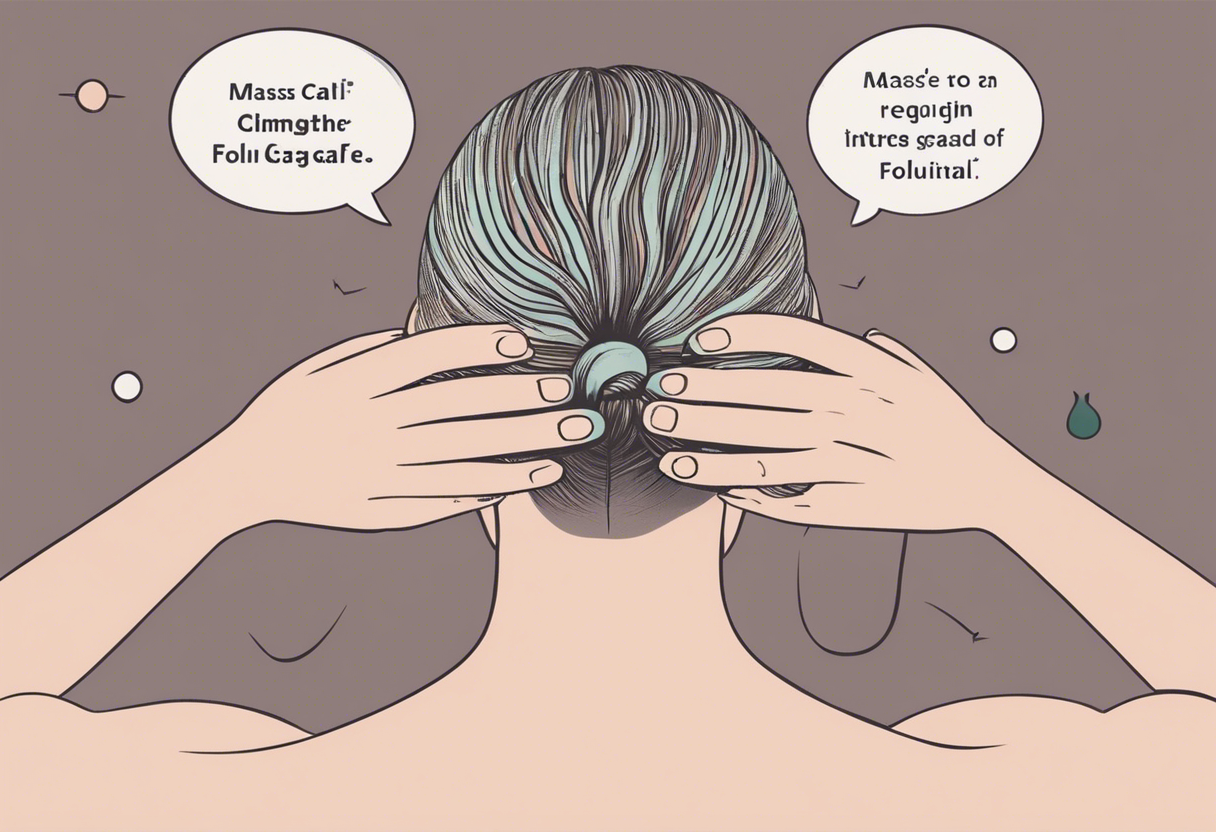
One of the key factors in maintaining healthy hair and promoting faster hair growth is using the right hair care products. With a vast array of options available in the market, it can be overwhelming to choose the right products for your hair. However, selecting the right hair care products is essential in providing your hair with the nourishment and protection it needs.
Using suitable shampoos, conditioners, and styling products can make a significant difference in the health and growth of your hair. Here are some reasons why using the right hair care products is crucial:
Nourishment: Hair care products that are specifically formulated with beneficial ingredients, such as vitamins, minerals, and natural extracts, can provide essential nourishment to your hair. These ingredients penetrate the hair shaft, strengthening the strands, and promoting faster growth from the roots. Look for products that contain ingredients like biotin, keratin, argan oil, and hibiscus extract for optimal nourishment.
Moisture and Hydration: Proper hydration is vital for maintaining healthy hair. Using a moisturizing shampoo and conditioner can help prevent dryness, reduce breakage, and improve the overall texture of your hair. Look for products that contain hydrating ingredients like shea butter, coconut oil, or glycerin.
Protection from Damage: Hair care products can also serve as a protective shield for your hair against external damage. Heat protectant sprays, for example, create a barrier between your hair and styling tools, preventing heat damage and breakage. Additionally, using products with UV filters can protect your hair from harmful sun rays, preventing dryness and color fading.
Balanced pH Levels: Maintaining the right pH balance for your hair is essential to prevent issues like scalp irritation, dryness, and excessive oiliness. Using hair care products that are pH balanced can help in preserving the natural pH of your scalp and hair, promoting a healthy environment for growth.
Suitability for Your Hair Type: Different hair types have different needs, and using products specifically formulated for your hair type can make a significant difference. Whether you have straight, wavy, curly, or afro-textured hair, using products tailored for your hair type ensures that you address its unique requirements, resulting in healthier and faster-growing hair.
Remember to read the labels and choose products that are free from harsh chemicals like sulfates, parabens, and silicones. Opt for natural and organic hair care products whenever possible, as they tend to be gentler and more beneficial for your hair.
In conclusion, using the right hair care products is essential for faster hair growth in women. Look for products that provide nourishment, hydration, and protection for your hair, while also considering your hair type and specific needs. By choosing the right products, you can give your hair the care it deserves and achieve optimal hair growth.
Tip 4: Managing Stress for Preventing Hair Loss
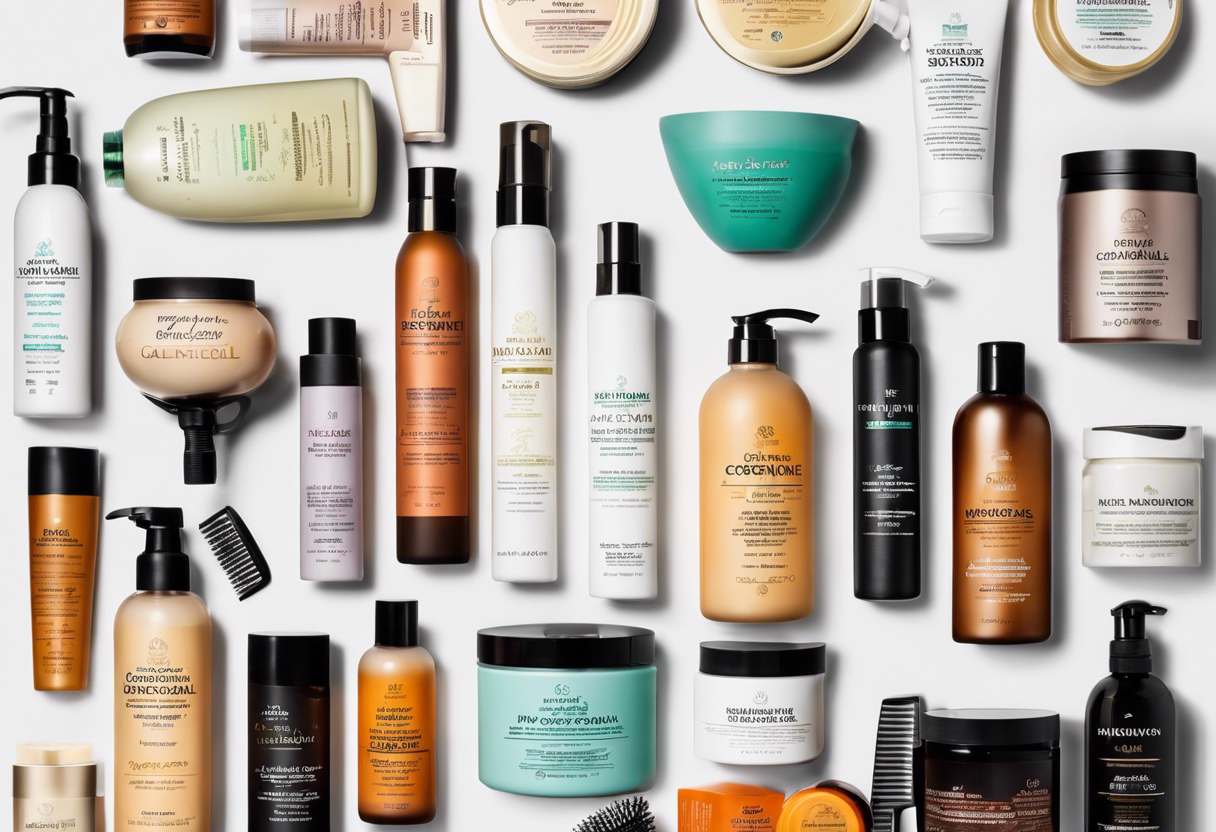
Stress can have a significant impact on hair health and growth. When the body is under stress, it releases hormones that can disrupt the hair growth cycle, leading to hair loss. Therefore, effectively managing stress is crucial for preventing hair loss and promoting healthy hair growth.
Here are some essential tips for managing stress to maintain a healthy head of hair:
Practice relaxation techniques: Engaging in relaxation techniques like deep breathing, meditation, or yoga can help reduce stress levels. These techniques help relax the mind and body, allowing for better hair growth.
Get regular exercise: Exercise has been proven to reduce stress and promote better overall well-being. Engaging in physical activities increases blood circulation, which can support hair follicles and improve hair growth.
Establish a routine: Establishing a daily routine can help reduce stress and anxiety. Having a structured schedule can provide a sense of control and stability, leading to a more relaxed state of mind.
Maintain a healthy diet: Eating a well-balanced diet rich in vitamins, minerals, and antioxidants is essential for healthy hair growth. Foods like fruits, vegetables, lean proteins, and whole grains can help nourish the hair follicles and minimize hair loss caused by stress.
Get enough sleep: Lack of sleep can contribute to increased stress levels and imbalances in hormones that might lead to hair loss. Prioritize getting quality sleep to ensure your body has proper time to rest, recover, and promote healthy hair growth.
Avoid excessive heat styling: Excessive heat styling tools like flat irons, curling irons, and blow dryers can damage the hair follicles, leading to hair loss. Minimize the use of these tools, and always use heat protectant products when styling your hair.
Seek support: If stress becomes overwhelming, it may be beneficial to seek support from a therapist or counselor. They can provide helpful strategies for managing stress and help you develop coping mechanisms that promote better overall mental health.
Remember, managing stress is not only beneficial for hair growth but for overall well-being as well. By implementing these tips, you can effectively manage stress and prevent hair loss, allowing for faster and healthier hair growth.
Tip 5: Proper Hair Washing and Drying Techniques

Proper hair washing and drying techniques are essential for maintaining healthy hair and promoting faster hair growth. Here are some tips to follow for effective haircare routines.
Shampooing techniques: Start by wetting your hair thoroughly with lukewarm water. Apply a small amount of shampoo and gently massage it into your scalp using your fingertips. Avoid using your nails to prevent any damage. Rinse your hair thoroughly to remove all traces of shampoo.
Conditioning: After rinsing out the shampoo, it's important to apply a suitable conditioner. Concentrate the conditioner on the ends of your hair, avoiding the scalp. Allow the conditioner to sit for a few minutes before rinsing it off with cool water.
Choosing the right products: Use haircare products that suit your hair type and address specific concerns such as dryness, dandruff, or damage. Look for formulas that are free from harsh chemicals, sulfates, and parabens. These can strip away natural oils and cause further damage.
Towel drying: Avoid rubbing your hair vigorously with a towel as this can cause friction and lead to breakage. Instead, gently blot your hair with a soft towel to absorb excess water. If time permits, air-drying is the best option. However, if you need to use a hairdryer, use the lowest heat setting to minimize damage.
Brushing techniques: Use a wide-toothed comb or a detangling brush to gently remove tangles or knots from your hair. Start from the ends and work your way up to prevent unnecessary pulling or breakage. Avoid brushing wet hair as it is more prone to breakage.
Avoid excessive heat styling: Excessive heat from curling irons, straighteners, and blow dryers can damage your hair and inhibit growth. If you must use heat styling tools, apply a heat protectant spray and use the lowest possible heat setting.
Regular trims: Regular trims every 8-12 weeks can help prevent split ends and breakage, allowing your hair to grow longer and healthier. Trimming removes damaged ends, promoting overall hair health.
By following these proper hair washing and drying techniques, you can minimize damage and breakage, leading to healthier, faster-growing hair. Remember to be gentle with your hair and use high-quality products suitable for your specific hair needs.
Tip 6: Incorporating Essential Oils for Hair Growth
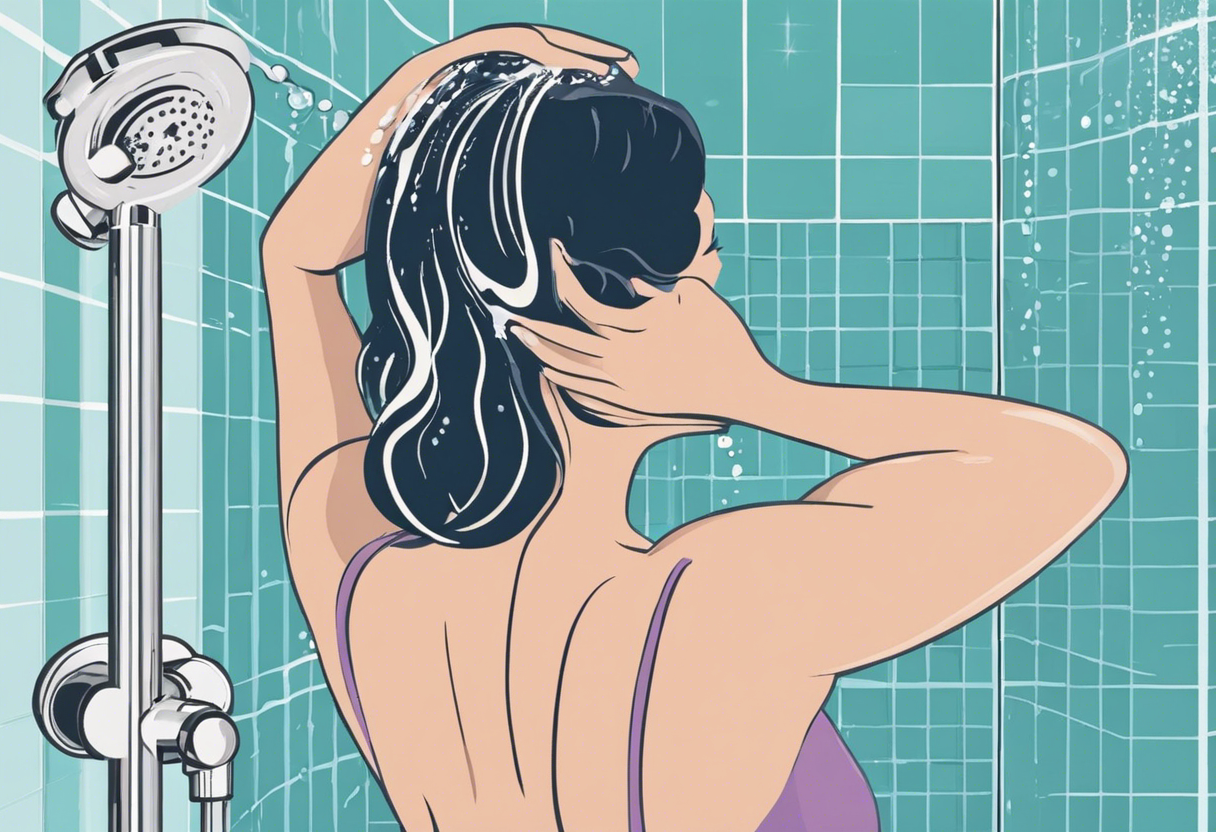
In the quest for faster hair growth, incorporating essential oils into your haircare routine can be a game-changer. Essential oils are concentrated plant extracts that can provide numerous benefits for your hair and scalp. Here are some essential oils you can consider incorporating into your haircare routine to promote hair growth:
Rosemary oil: Known for its stimulating properties, rosemary oil can enhance hair growth by increasing blood circulation to the scalp. It also helps to rejuvenate the hair follicles and promote thicker, healthier hair.
Lavender oil: Not only does lavender oil have a soothing and calming scent, but it can also promote hair growth. It helps to balance scalp oils, reduce inflammation, and improve blood circulation, all of which contribute to healthier hair growth.
Peppermint oil: Peppermint oil has a cooling and refreshing sensation and can stimulate hair growth by increasing blood flow to the scalp. It also acts as a natural cleanser, helping to remove excess sebum and unclog hair follicles.
Cedarwood oil: Cedarwood oil can help to balance oil production in the scalp, which is crucial for maintaining a healthy environment for hair growth. It also has antifungal properties that can keep the scalp free from infections, which may inhibit hair growth.
Tea tree oil: Tea tree oil is known for its antibacterial and antifungal properties, making it beneficial for promoting scalp health. It can help to unclog hair follicles, reduce dandruff, and alleviate scalp irritation, all of which can contribute to healthier hair growth.
When incorporating essential oils into your haircare routine, it's important to dilute them with a carrier oil, such as coconut oil or jojoba oil, to prevent skin irritation. A general guideline is to mix a few drops of essential oil with a tablespoon of carrier oil before applying it to your scalp. Massage the mixture into your scalp for a few minutes to improve absorption and stimulate blood circulation.
You can use essential oils as a pre-shampoo treatment by applying the oil mixture to your scalp and leaving it on for at least 30 minutes before shampooing. Alternatively, you can add a few drops of essential oil to your shampoo or conditioner to reap their benefits with every wash.
Incorporating essential oils for hair growth is a natural and effective way to boost your hair's health and promote faster growth. However, it's important to note that individual results may vary, and consistency is key. Experiment with different combinations of essential oils to find what works best for your hair type and scalp condition. Remember to consult with a dermatologist or hair care professional if you have any underlying scalp conditions or concerns.
Tip 7: Avoiding Excessive Heat and Chemical Damage
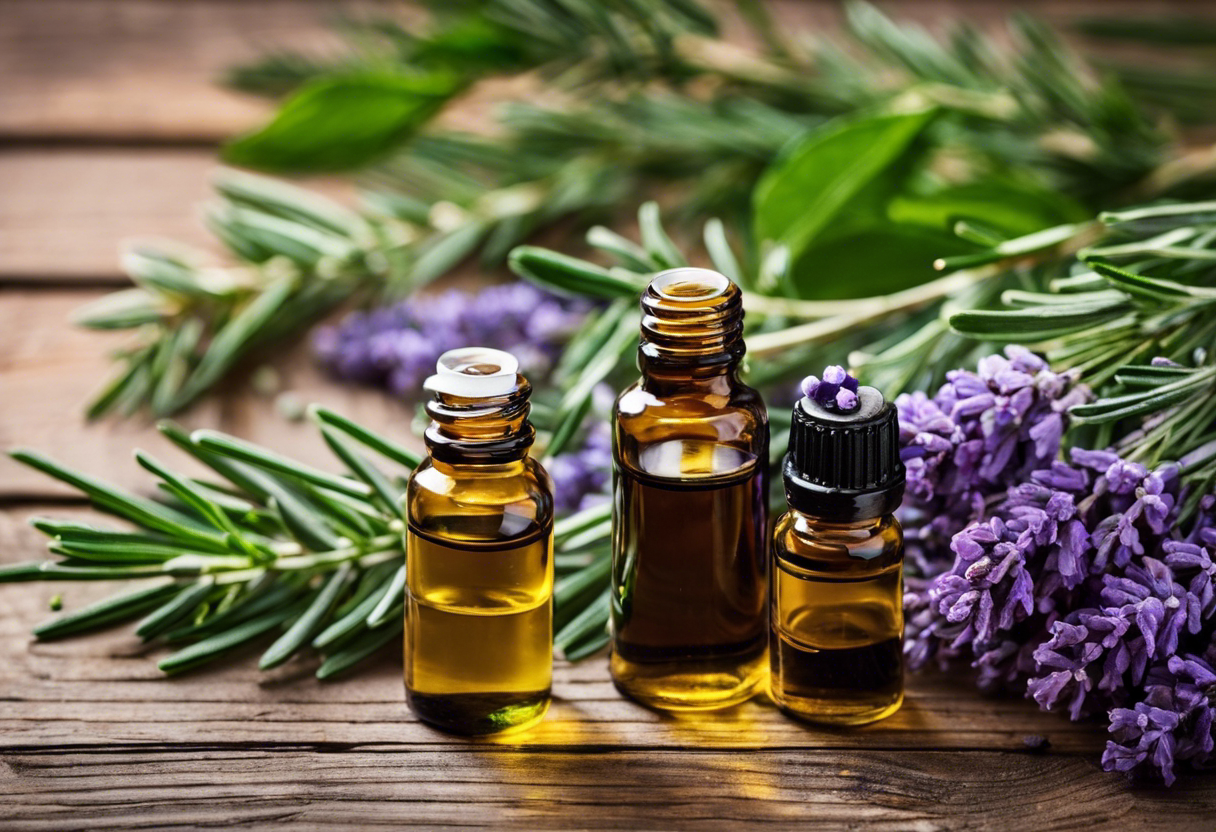
To promote faster hair growth, it is essential to protect your hair from excessive heat and chemical damage. These external factors can weaken and damage the hair follicles, leading to breakage and slower hair growth. Follow these tips to minimize heat and chemical damage to your hair:
Limit the use of heating tools: Excessive use of hot styling tools like straighteners, curling irons, and blow dryers can leave your hair dry and brittle. Whenever possible, let your hair air dry instead of using a blow dryer. When using heat styling tools, make sure to use a heat protectant spray to minimize damage.
Lower the heat setting: If you must use a blow dryer or styling tool, avoid using the highest heat setting. Opt for a lower heat setting to minimize the risk of causing heat damage. It may take a bit longer to style your hair, but it will be worth it in the long run.
Avoid chemical treatments: Chemical treatments, such as perming, relaxing, or coloring, can be harsh on your hair and lead to damage. If you want to promote faster hair growth, it is advisable to minimize or avoid chemical treatments altogether. If you do decide to color your hair, opt for gentle, ammonia-free dyes, and try to space out your color sessions to give your hair time to recover.
Protect your hair from the sun: Just like your skin, your hair can also suffer from the damaging effects of the sun. UV rays can weaken the hair shaft, leading to breakage and slower growth. When spending time outdoors, wear a hat or use hair products that contain UV protection to shield your hair from the sun's harmful rays.
Be mindful of swimming pool chemicals: Chlorine and other chemicals commonly found in swimming pools can wreak havoc on your hair. To protect your hair before swimming, wet your hair with clean water and apply a leave-in conditioner or hair oil. This creates a barrier between your hair and the pool water, reducing the absorption of chlorine and other chemicals.
By taking these precautions, you can help safeguard your hair from excessive heat and chemical damage, promoting faster hair growth and maintaining healthy locks.
Note: It is essential to consult with a professional hairstylist or trichologist for personalized advice on how to best care for your specific hair type and needs.
Tip 8: Regular Trimming and Maintenance of Hair
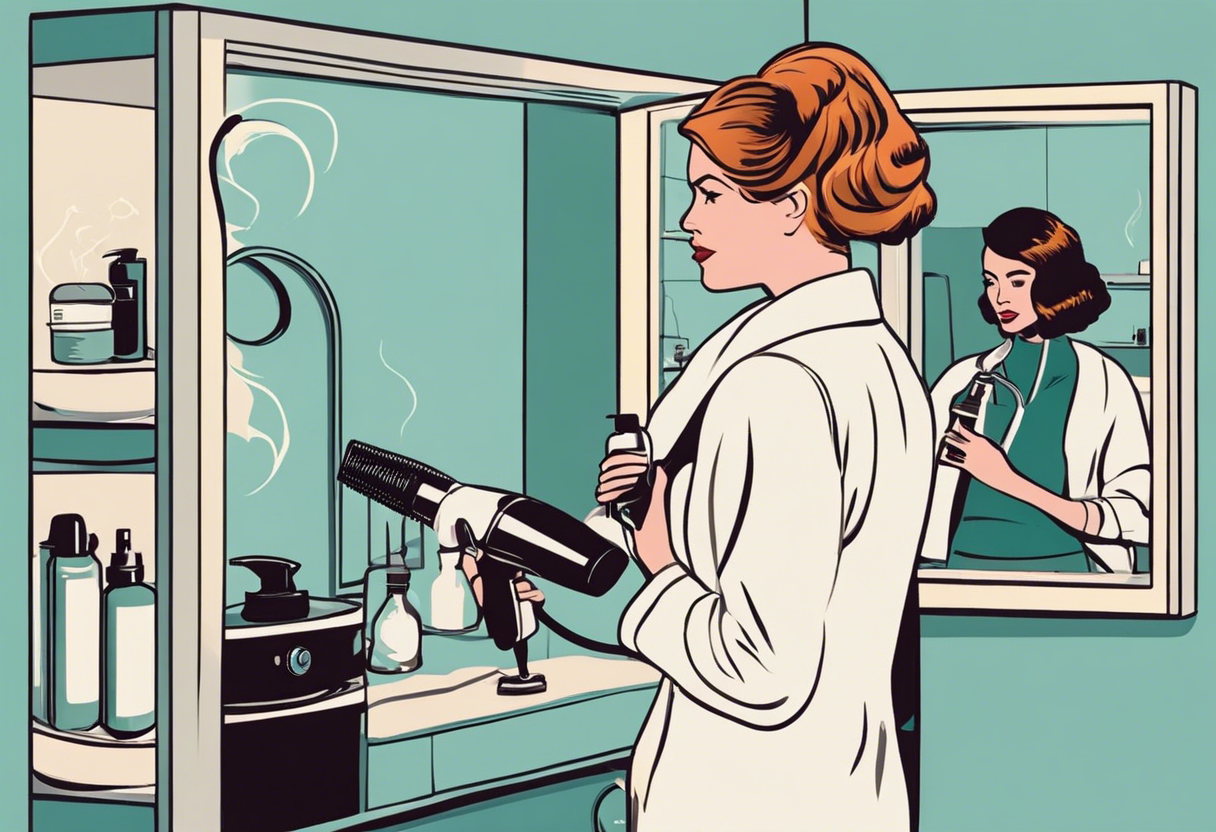
Maintaining regular hair trims is an essential practice for promoting faster hair growth in women. While it may seem counterintuitive to cut your hair when trying to grow it longer, regular trims are crucial for maintaining healthy hair. Here's why:
1. Prevents Split Ends
Split ends are a common hair problem that can hinder hair growth. When the ends of your hair split, it can travel up the hair shaft, causing further damage. Regular trims help prevent split ends by removing damaged and frayed hair ends, keeping your hair healthier and manageable.
2. Promotes Healthier Hair
Trimming your hair regularly helps ensure that you are cutting away any dry, damaged, or lifeless hair strands. This practice allows your hair to grow from a healthier starting point, reducing the risk of breakage and maintaining the overall health of your hair.
3. Enhances Hair Texture
Trimming your hair regularly can improve its texture. By removing damaged ends and promoting healthy hair growth, you will notice a significant improvement in the overall look and feel of your hair. It can become smoother, shinier, and more manageable, making it easier to style and maintain.
4. Maintains Hair Length
Contrary to popular belief, regular trims do not hinder hair growth but rather help maintain the length you desire. By getting rid of split ends and preventing breakage, you can retain the length you've worked so hard to achieve. Remember, healthy hair grows faster than damaged hair.
5. Prevents Hair Thinning
When hair strands are damaged, it can lead to thinning hair. Trimming your hair on a regular basis allows you to remove any thinning or weak strands, making way for healthier, thicker hair growth. It's an effective way to prevent hair thinning and maintain a fuller head of hair.
6. Promotes Blood Circulation
Getting regular trims can also stimulate blood circulation to the scalp, which plays a crucial role in promoting hair growth. When the scalp receives adequate blood flow, it ensures that the hair follicles receive essential nutrients and oxygen necessary for healthy hair growth. Regular trimming can help encourage this circulation and support hair growth.
7. Eliminates Tangles and Knots
Trimming your hair helps eliminate tangles and knots that may have formed over time. By removing damaged ends, you reduce the chances of tangling, making it easier to brush and style your hair. This, in turn, prevents excessive hair breakage and promotes healthy growth.
In conclusion, regular trimming and maintenance of your hair is vital for faster hair growth in women. By preventing split ends, promoting healthier hair, enhancing hair texture, maintaining hair length, preventing thinning, promoting blood circulation, and eliminating tangles and knots, regular trims contribute to overall hair health and can help you achieve your desired hair length in a timely manner. Make it a part of your haircare routine, and you'll reap the benefits of healthier, faster hair growth.
Tip 9: Implementing Lifestyle Changes for Healthier Hair
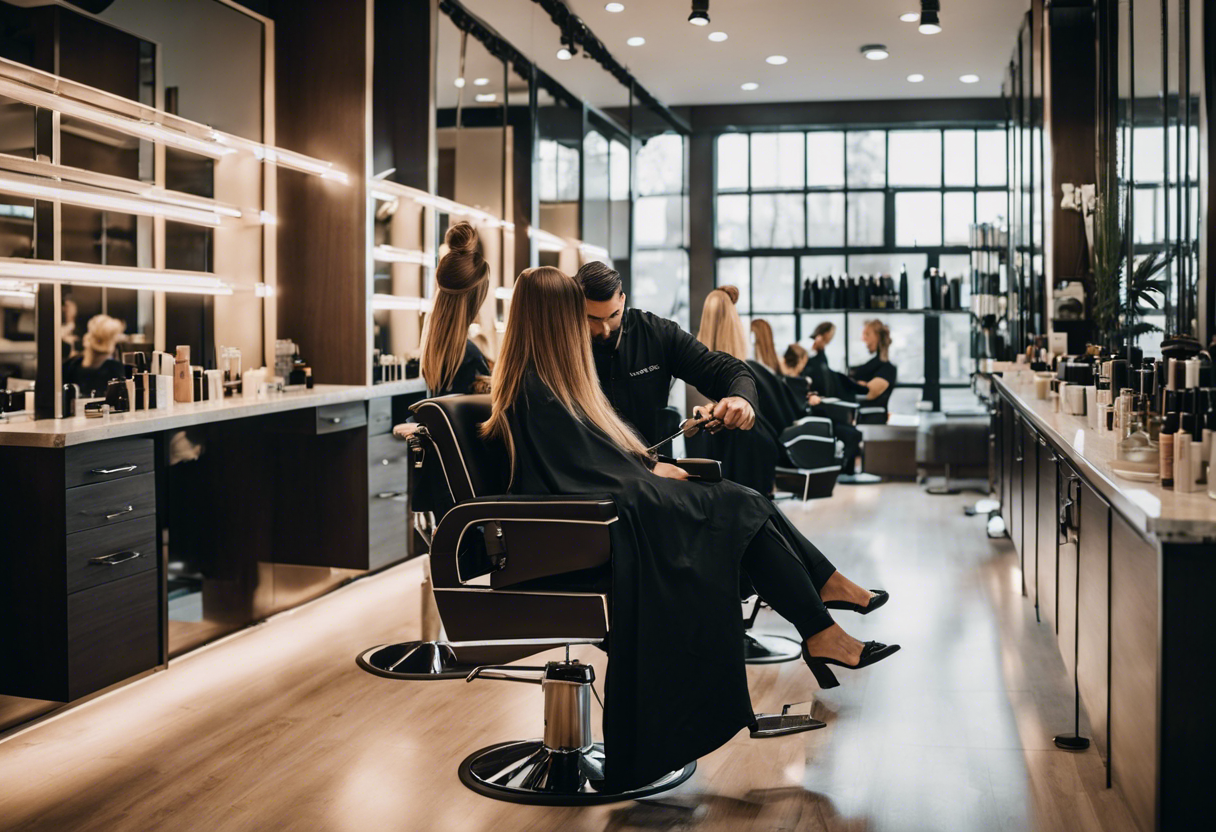
Besides using haircare products and following a proper haircare routine, certain lifestyle changes can also contribute to healthier hair growth in women. By incorporating these changes into your daily routine, you can help promote stronger and longer hair. Here are some effective lifestyle tips to consider:
Eat a balanced diet: One of the key factors for healthy hair growth is eating a well-balanced diet. Ensure that your meals include a variety of nutrients, such as vitamins A, B, C, and E, iron, zinc, and protein. These nutrients help nourish your hair follicles and promote stronger, healthier hair.
Stay hydrated: Drinking an adequate amount of water is not only essential for overall health but also for your hair. Hydration helps maintain the hair's moisture content, preventing dryness, breakage, and dullness. Aim to drink at least eight glasses of water a day to keep your hair hydrated and healthy.
Reduce stress levels: Chronic stress can have a negative impact on hair health and growth. Stress disrupts the normal hair growth cycle and can lead to excessive hair shedding. Incorporate stress-management techniques into your routine, such as exercise, meditation, deep breathing, or engaging in activities you enjoy.
Get regular exercise: Exercise improves blood circulation, including to the scalp, which can stimulate hair growth. Aim for at least 30 minutes of moderate-intensity exercise most days of the week to enhance blood flow to your scalp and promote healthier hair growth.
Protect your hair from heat and styling damage: Heat styling tools, such as flat irons and curling wands, can cause damage to your hair if used excessively. Minimize heat exposure and use a heat protectant spray when styling. Additionally, avoid tight hairstyles and excessive brushing, as these can lead to hair breakage and damage.
Limit chemical treatments: Frequent use of chemical treatments like relaxers, perms, and hair dyes can weaken and damage your hair. If possible, limit the use of these treatments and consider more natural alternatives. If you do use chemical treatments, ensure proper care and conditioning to reduce the risk of damage.
Protect your hair from environmental factors: Environmental factors like pollution, harsh weather conditions, and UV rays can harm your hair. Protect your hair by wearing hats or scarves when exposed to the sun, using a leave-in conditioner with UV protection, and rinsing your hair after swimming in chlorinated or saltwater.
Remember, implementing lifestyle changes takes time and consistency. Be patient with your hair growth journey and give these changes a chance to make a positive impact. With dedication and proper care, you can achieve healthier, stronger, and faster-growing hair.
Tip 10: Seeking Professional Help for Persistent Hair Growth Issues

While following proper haircare practices can help promote faster hair growth in women, there may be cases where persistent hair growth issues require professional help. If you have tried various haircare methods and are still struggling to achieve the desired hair growth, it may be time to consult a professional. Here are some reasons why seeking professional assistance can be beneficial:
Expert advice: Professional hair specialists, such as trichologists or dermatologists, have extensive knowledge and experience in understanding hair and scalp conditions. They can provide personalized advice and recommendations based on your unique hair type, health history, and desired outcomes.
Identifying underlying issues: Persistent hair growth issues could be indicative of underlying health conditions or imbalances. Consulting a professional can help identify any potential underlying issues that may be hindering your hair growth. They can perform tests, assess your scalp health, and evaluate your overall well-being to determine the root cause of the problem.
Tailored treatment plans: Professionals can create personalized treatment plans tailored to your specific needs. They may suggest specialized haircare products, prescribe medication or supplements, or recommend specific hair treatments like scalp massages, laser therapy, or PRP (Platelet Rich Plasma) therapy. These treatments can target specific concerns and stimulate hair growth.
Professional procedures: Some hair growth issues, such as excessive hair loss or alopecia, may require professional procedures that cannot be performed at home. Hair transplant surgery, hair extensions, or microblading are some examples of treatments that professionals can offer to address persistent hair growth issues effectively.
Monitoring and guidance: Professionals can monitor your progress throughout your hair growth journey and make adjustments to your treatment plan as needed. Regular check-ups will ensure that you are on the right track to achieve your hair growth goals. They can also provide guidance on maintaining your hair's health and preventing future hair growth issues.
Remember that seeking professional help does not mean you are failing in any way; instead, it shows commitment to finding the best solution for your hair growth concerns. By consulting a professional, you gain access to their expertise, personalized care, and a comprehensive approach to addressing your hair growth issues.

No comments:
Post a Comment